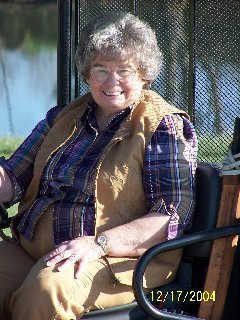When Gerald went to Cape Girardeau for a tractor part on Monday morning, I tagged along.
We had often traversed Route 146 from Jonesboro to Ware when we lived in the Mississippi bottoms. A few summers ago, we had driven slowly, stopped often, and searched ditches diligently for the Trail of Tears marker we both remembered. A photograph of the marker by the late Geneva Wiggs had been on the 2000 summer issue of Saga of Southern Illinois. Carole Watkins, who had grown up in that area, was emailing me directions from California assuring me the marker was there. She had just seen it that summer. Finally, she sent me her photographs to prove it. But the marker was gone. No one seems to know what happened to it.
The identical marker (both put up by the state in 1935) had long before disappeared from the more eastern area on Route 146. When Interstate 57 went in, King Neptune’s grave was moved to the Trail of Tears rest stop on the northbound traffic side; evidently the Trail of Tears marker near it had already been stolen. Sadly (and almost inconceivably), the Trail of Tears rest stops carry no information about the Trail of Tears.
But on Monday, Gerald and I were looking for the Trail of Tear routes that went south of Route 146. Recently we had been studying Marie Exter’s 1994 maps that she had shared with Geneva Wiggs, who had shared copies with me. Learning from Robin Roberts about the Lakota Sundance held in the open area south of the water plant, we wanted to see the trails that evidently led to Hamburg Landing three-and-a-half miles south of Willard’s Landing on the Mississippi River.
The detachments going to Willard’s Landing had used the route we call Route 146 and were stranded in the area of Dutch Creek, Sand Dug Hill (not dug yet), and Clear Creek before the sloughs stopped them from going on over to the Mississippi River where ice floes made getting across the river impossible for three or more weeks.
Darrell Dexter in his Saga article felt the various detachments used all the ferries on the river at that time--the two Willard brother ferries (sometimes called by their predecessor’s name of Green’s Ferry, the ferry at Hamburg Landing with Bainbridge Ferry coming over from the Missouri side to the sandbar there, and finally Smith’s Ferry leading to Cape Girardeau. It would take two or three days to ferry a detachment of l000 people across the Big River.
For Gerald this travel on Berryville Road past Lockard Chapel Church was a trip back to his boyhood. Almost every farmhouse we saw, he could remember visiting there or knowing the people back then. We had actually traveled these same roads with our friends Tom and Lois (Ferrell) Doctor a few years back--but then we were looking for traces of Lois’s ancestors--not traces of the Cherokee.
We could not resist going up to where Atwood Tower used to be. Gerald remembered the days he spent in the tower with his uncle Francis Wenger. They’d leave Uncle Francis’ car or truck at the home of Louie Kelley’s sister and walk the rest of the way when the road was not passable. Gerald said a day spent in the tower watching for smoke could become a very boring day. I bet he or his brothers livened it up for Uncle Francis, who had some sort of instrument that he could use to pinpoint the location of a fire and send word to the firefighters. Fortunately, we did not meet any other vehicles since the gravel road was not built for two cars to pass.
Although we found no traces we could recognize, we were impressed with the breath-taking steepness and beauty of the tree-covered hillsides. It was a stunning wilderness and a beautiful drive with slim but tall leafy trees reaching up trying to find sunlight. Yet I thought how difficult it must have been for the hungry Cherokee to look for game in those steep hillsides.
We went to the dead end of another road searching for a possible passage to Route 146 going south from Ware, but the road turned into a path Gerald’s pickup could not take. We had to go back and across Dutch Creek to Route 146 going south, where we crossed Dutch Creek again. Dutch Creek runs north and under the bridge on 146; and finally up above the old Morgan School area, it runs into Clear Creek, which runs south. (I hope I got that right--Gerald kept trying to explain it to me.)
We came home using the Old Cape Road with a brief side trip through Mission Valley country. From the road signs there, I guess that little village, which is known for producing both brains and musicians, may be called Fair City. I would love to attend the church there some Sunday.
But when we were growing up, we had heard that area referred to as either Ubydam Hollow or Ibedam Hollow. Like most people, I was never sure which dam hollow people were talking about, and I am not sure I had ever visited those hollows before. It was peaceful and lovely.
We continued on by Lyerla Lake and somehow onto Airport Road (which I understand is where Tickie Norris and a friend would light their plane in the old days) and finally came back out by Lockard Chapel and back to Route 146.
A brief visit with Geneva Wiggs’ daughter Billie Kaye to return some photographs made the day complete.
Yorktown Virginia
-
On Sunday, after our museum day, Wesley and I drove to Yorktown Va. I am
so glad we ventured out looking for a waterfront on this trip. I had to
mercha...
5 years ago












No comments:
Post a Comment